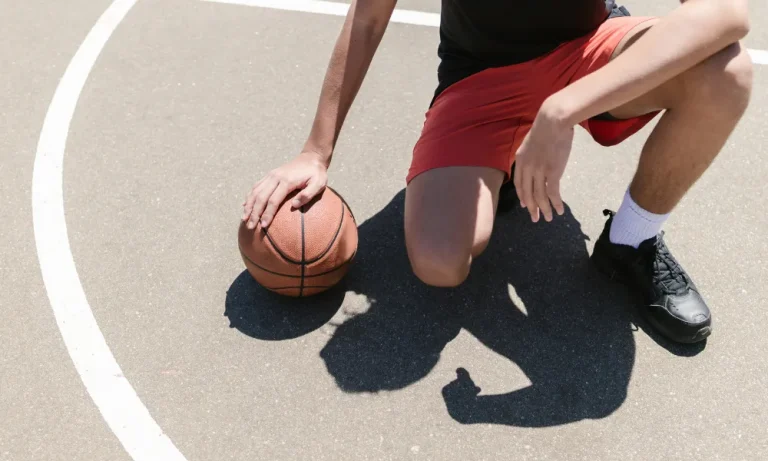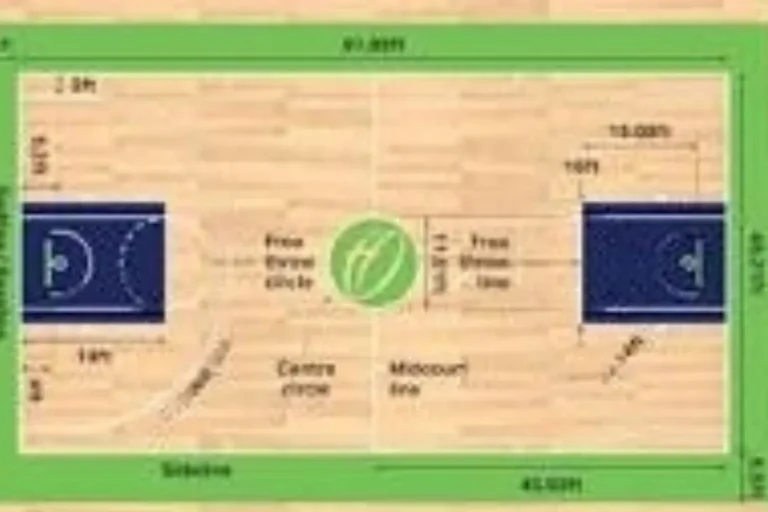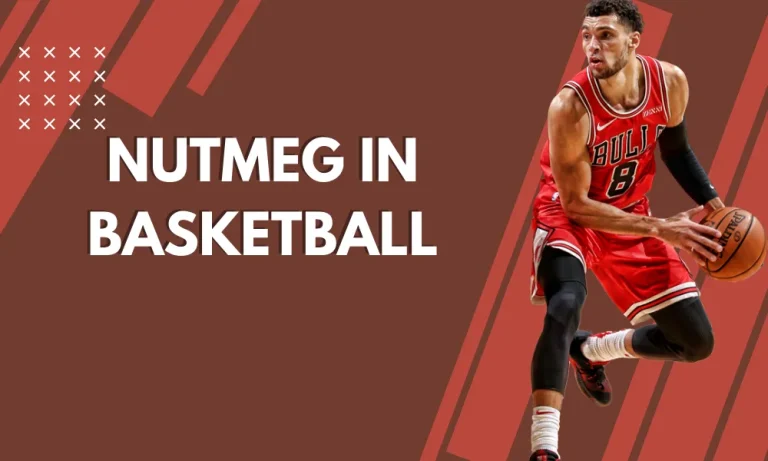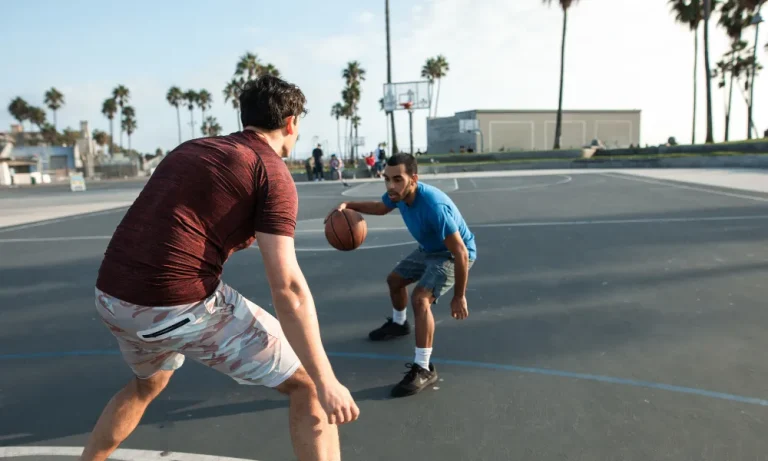Intentional Foul in Basketball: Examples and Penalties
Have you ever wondered why some basketball players intentionally foul their opponents? It’s a tactic that has sparked debates among fans, players, and coaches. In this article, we’ll delve into the world of intentional fouls in basketball. We’ll explore real-life examples, discuss the penalties involved, and uncover the impact these fouls can have on the game. Get ready to gain a deeper understanding of this controversial aspect of basketball!
What is an Intentional Foul?
An intentional foul in basketball refers to a deliberate and premeditated act committed by a player with the intention of impeding the progress of an opponent. It is a strategic move aimed at gaining a tactical advantage or disrupting the flow of the game. Unlike regular fouls that may occur unintentionally during the course of gameplay, intentional fouls are planned and executed with a specific purpose in mind.
Key Characteristics of Intentional Fouls:
- Deliberate Action: Intentional fouls involve players making a conscious decision to commit the foul, often with the intention of stopping the clock or preventing an opponent from scoring an easy basket.
- Physical Contact: These fouls usually involve physical contact, such as grabbing, holding, pushing, or tripping an opponent. The contact is intentional and intended to impede the progress of the player with the ball.
- Timing and Execution: Intentional fouls are typically committed during crucial moments of the game, such as when the opposing team is about to score or during the final minutes of a close game. Players carefully time their actions to maximize their impact.
Difference between Intentional Fouls and Regular Fouls:
The main distinction between intentional fouls and regular fouls lies in the intent behind the action. Regular fouls are often the result of incidental contact or a player’s attempt to defend or contest a shot without any malicious intent. On the other hand, intentional fouls are premeditated acts aimed at gaining an advantage or disrupting the flow of the game. While regular fouls are typically penalized with free throws or possession, intentional fouls may result in additional penalties or stricter consequences due to their deliberate nature.
Examples of Intentional Fouls
Intentional fouls are often employed strategically by basketball players and teams to gain an advantage or disrupt the opposing team’s momentum. Let’s explore some common scenarios where intentional fouls are observed during basketball games.
- Late-Game Situations: In close games where time is running out, players may intentionally foul their opponents to stop the clock. By doing so, they prevent the opposing team from running down the clock and force them to earn points from the free-throw line.
- Hack-a-Shaq Strategy: This strategy involves intentionally fouling a poor free-throw shooter, often a player with a low free-throw percentage. By sending them to the free-throw line, the opposing team hopes to reduce their scoring potential and gain possession of the ball.
- Preventing Fast Breaks: When a team is on a fast break and has the potential to score an easy basket, players may intentionally foul to disrupt the momentum and force the opposing team to earn their points from the free-throw line.
- Foul to Save Time: In situations where a team is trailing and needs more time to attempt a comeback, players may intentionally foul to stop the clock and extend the game. This strategy allows them to regain possession quickly and create scoring opportunities.
Penalties for Intentional Fouls
When a player commits an intentional foul in basketball, there are specific penalties imposed to discourage unsportsmanlike behavior and maintain fair play. Let’s take a closer look at the penalties associated with intentional fouls and how referees determine their severity.
- Free Throws and Possession: The most common penalty for an intentional foul is awarding free throws to the fouled player. The number of free throws depends on the situation and league rules. Additionally, the fouled team is often granted possession of the ball after the free throws.
- Flagrant Foul: In cases where the intentional foul involves excessive force or is deemed dangerous, it may be upgraded to a flagrant foul. This results in additional penalties, such as ejection from the game or further disciplinary action.
- Referee Discretion: Referees play a crucial role in determining the severity of intentional fouls and applying appropriate penalties. They assess factors like the player’s intent, the level of physical contact, and the impact on the game. Referees have the authority to adjust penalties based on their judgment, ensuring fair and consistent enforcement of the rules.
Controversies Surrounding Intentional Fouls
The use of intentional fouls in basketball has sparked an ongoing debate among fans, players, and coaches regarding the ethics of this tactical maneuver. Let’s delve into the arguments for and against the use of intentional fouls.
Arguments For Intentional Fouls: Some proponents argue that intentional fouls are a legitimate part of the game strategy. They believe that teams should be allowed to use every available tactic to gain an advantage. Intentional fouls can disrupt the rhythm of the opposing team, slow down their offense, and force them to earn points from the free-throw line. It also provides trailing teams with an opportunity to extend the game and make a comeback.
Arguments Against Intentional Fouls: Critics of intentional fouls argue that it goes against the spirit of fair play and sportsmanship. They claim that it disrupts the flow of the game and can lead to a lack of excitement for spectators. Additionally, intentional fouls can be seen as a way to exploit weaknesses or target specific players, which may be considered unsportsmanlike.
Impact on the Game
Intentional fouls can have a significant impact on the gameplay and team strategies in a basketball game. Let’s analyze how intentional fouls influence the dynamics of the game and can potentially affect its outcome.
Disrupting Rhythm and Momentum: Intentional fouls can disrupt the rhythm and momentum of the opposing team. By strategically targeting key players or disrupting their offensive plays, teams employing intentional fouls can throw their opponents off balance. This disruption can lead to missed shots, turnovers, and overall frustration, giving the fouling team an advantage.
Strategic Time Management: Intentional fouls can also be used as a form of strategic time management. When a team is trailing in the final minutes of a game, intentionally fouling the opposing team forces them to earn points from the free-throw line, thereby extending the game. This tactic provides the fouling team with more opportunities to catch up and potentially secure a victory.
Psychological Impact: Intentional fouls can have a psychological impact on players. Being intentionally fouled can frustrate and demoralize individuals, affecting their confidence and decision-making on the court. This psychological impact can further tilt the game in favor of the fouling team.
Conclusion
intentional fouls in basketball stir up a debate surrounding their ethics and impact on the game. While some argue that intentional fouls are a legitimate strategic maneuver, others question their fairness and sportsmanship.
Regardless of the controversies, it is crucial to understand the penalties associated with intentional fouls and how referees determine their severity. By striking a balance between tactical advantage and fair play, basketball aims to maintain the integrity of the game while allowing teams to employ strategic maneuvers.
FAQs
What is considered an intentional foul in basketball?
An intentional foul is a deliberate and purposeful act of making physical contact with an opposing player, usually with the intention of impeding their progress or disrupting their offensive play.
What are some examples of intentional fouls in basketball?
Examples of intentional fouls include grabbing, holding, pushing, or excessively impeding an opponent’s movement, particularly when the player does not have a legitimate chance to make a play on the ball.
What penalties are associated with intentional fouls?
Intentional fouls typically result in free throws for the fouled player or team, depending on the situation. Additionally, the fouling player may face personal fouls, which can lead to disqualification if accumulated.
How do referees determine if a foul is intentional?
Referees consider the nature of the contact, the player’s intent, and the circumstances surrounding the foul to determine if it was intentional. They often rely on their judgment and video replays if available.
Can intentional fouls result in ejections or suspensions?
Yes, intentional fouls can lead to ejections if they are deemed flagrant or excessively dangerous. Repeated intentional fouls or those committed with malicious intent can also result in player suspensions.
Are intentional fouls allowed in all levels of basketball?
While intentional fouls are generally allowed at all levels of basketball, the severity of penalties and the specific rules may vary depending on the league or competition. It is essential to familiarize oneself with the governing body’s regulations.






